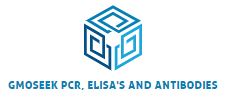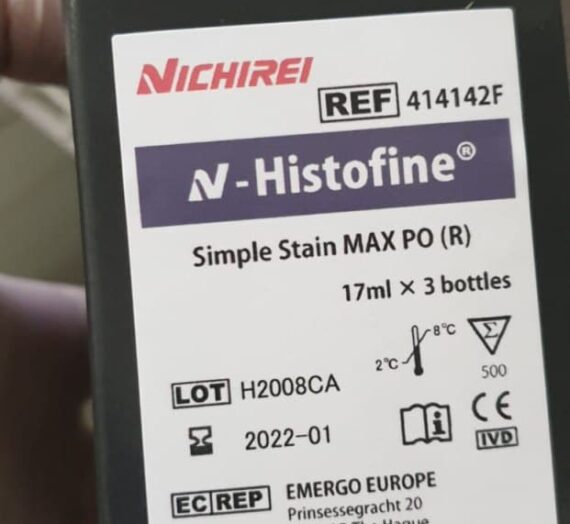Tropomyosin receptor kinase inhibitors (TRKi) have been proven to supply a dramatic and long-lasting impact on tumours harbouring fusions of neurotrophic receptor tyrosine kinase (NTRK) genes. Due to the low incidence of those molecular aberrations in common kinds of solid adult tumours, the identification of patients eligible for the remedy with TRK inhibitors in routine clinical practice is a serious problem. The present strategies for NTRK gene fusion testing embody immunohistochemistry (IHC), fluorescence in situ hybridization (FISH), and a number of genomic assays utilizing next-generation sequencing (NGS).
After contemplating the traits of those checks, we advocate two-step testing for clinical practice in tumours with a low incidence of NTRK gene fusions. In step one, a contemporary or archival formalin fastened paraffin embedded (FFPE) pattern is examined utilizing a validated IHC technique. If the IHC result’s optimistic, verification utilizing RNA-based ought to observe, ideally utilizing contemporary tissue pattern. If contemporary tissue bio-psy can’t be obtained, e.g. as a consequence of a disproportionate danger or discomfort for the affected person, an archival FFPE pattern could also be used for testing. For tumours with excessive incidence of NTRK gene fusions, we advocate upfront NGS sequencing. Larotrektinib is at present the one TRK inhibitor registered in the EU.
Since the 1990s, researchers have found a number of main gene variants contributing to PD etiology. A big physique of literature now exists supporting the frequency of those variants in totally different populations and their results on phenotype and clinical course. Recently, clinical trials have emerged with therapies concentrating on genetic types of PD, particularly LRRK2 and GBA. Despite this rising data, genetic testing for PD shouldn’t be sometimes provided by neurologists together with motion dysfunction specialists. Neurologists specific considerations in regards to the monetary and sensible problems with genetic testing in addition to the potential impression on their patients.
Researchers and specialists in the sector are questioning this hesitation as clinical utility and shopper demand improve. Consideration of genetic testing for PD is shifting, as we enter a brand new period of precision drugs and acquire clinical data about PD. Barriers to testing, as perceived by clinicians, could be overcome with schooling, assist, and involvement of a number of stakeholders with the objective of creating PD genetic testing accessible to all patients. Although entrektinib, one other TRK inhibitor, shouldn’t be but registered in the EU, it’s at present out there in the Czech Republic inside an Early Access Programme.
Plasma cell myeloma: position of histopathology, immunophenotyping, and genetic testing
Myeloma is a malignant neoplasm of plasma cells with advanced pathogenesis. Diagnosis and danger stratification require the mixing of histology, radiology, serology, and genetic information. Bone marrow biopsies are important for myeloma analysis by offering materials for histologic and cytologic evaluation in addition to immunophenotypic and genetic research. Flow cytometry and genetic research are, in explicit, turning into more and more necessary for analysis, danger stratification, and evaluation of remedy response.
Myeloma has historically been characterised by recurrent cytogenetic abnormalities that may be divided into two subtypes: hyperdiploid, characterised by trisomies, and non-hyperdiploid, characterised by translocations involving chromosome 14. These abnormalities are regarded as major occasions, initiating a premalignant state, which progresses to myeloma via the acquisition of secondary mutations. The emergence of next-generation sequencing has led to the invention of quite a few mutations and gene fusions that comprise the heterogenous genomic panorama of myeloma.
As the underlying pathogenesis of myeloma continues to be delineated, potential therapeutic targets have additionally emerged. Herein, we describe the significance of histology, immunophenotype, and mutational evaluation in the evaluation of myeloma. PGT was carried out in 12 N-RBCF carriers, of whom four carried Y-autosome fusions and Eight autosomal fusions. A complete of 12 (63.2%) of 19 blastocysts exhibited regular/balanced embryos, and just one (5.3%) embryo exhibited unbalanced translocations amongst Y-autosome fusion circumstances. In distinction to those findings, the share of regular/balanced blastocysts in Eight autosomal N-RBCF circumstances was 28.2% (11/39), whereas the unbalanced translocation charge was 53.8%.

Genetic Testing in Neurodevelopmental Disorders
Neurodevelopmental issues are essentially the most prevalent power medical situations encountered in pediatric major care. In addition to figuring out acceptable descriptive diagnoses and guiding households to evidence-based therapies and helps, complete care for people with neurodevelopmental issues features a search for an underlying etiologic analysis, primarily via a genetic analysis. Identification of an underlying genetic etiology can inform prognosis, make clear recurrence danger, form clinical administration, and direct patients and households to condition-specific sources and helps.
Here we evaluate the utility of genetic testing in patients with neurodevelopmental issues and describe the three main testing modalities and their yields – chromosomal microarray, exome sequencing (with/with out copy quantity variant calling), and FMR1 CGG repeat evaluation for fragile X syndrome. Given the diagnostic yield of genetic testing and the potential for clinical and private utility, there’s consensus that genetic testing must be provided to all patients with world developmental delay, mental incapacity, and/or autism spectrum dysfunction.
[Linking template=”default” type=”products” search=”Custom testing of animal/human samples for Anti-Leptospirosis LipL32 protein IgG” header=”2″ limit=”140″ start=”3″ showCatalogNumber=”true” showSize=”true” showSupplier=”true” showPrice=”true” showDescription=”true” showAdditionalInformation=”true” showImage=”true” showSchemaMarkup=”true” imageWidth=”” imageHeight=””]
Despite this advice, information counsel {that a} minority of kids with autism spectrum dysfunction and mental incapacity have undergone genetic testing. To handle this hole in care, we describe a structured however versatile method to facilitate integration of genetic testing into clinical practice throughout pediatric specialties and focus on future concerns for genetic testing in neurodevelopmental issues to arrange pediatric suppliers to care for patients with such diagnoses right this moment and tomorrow.




